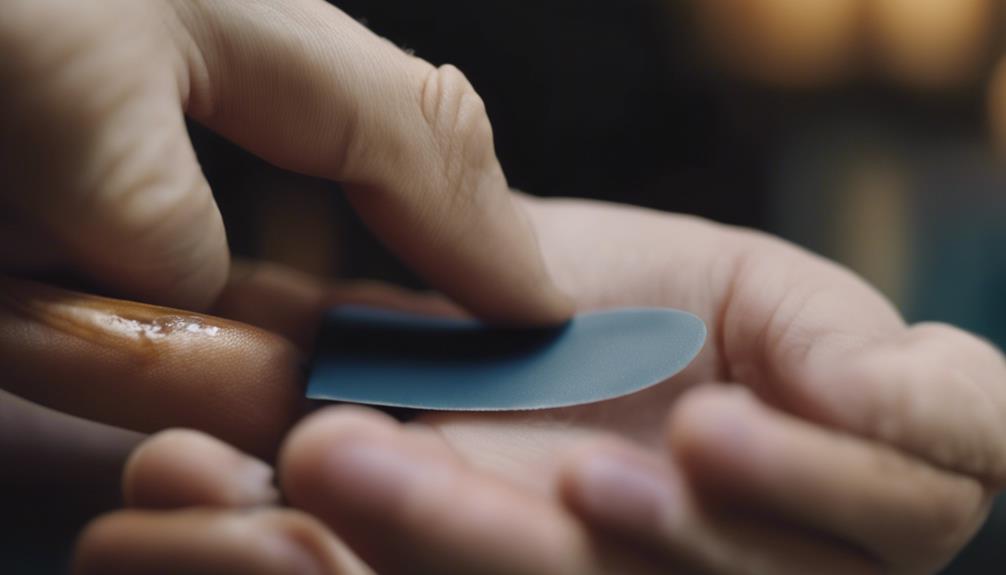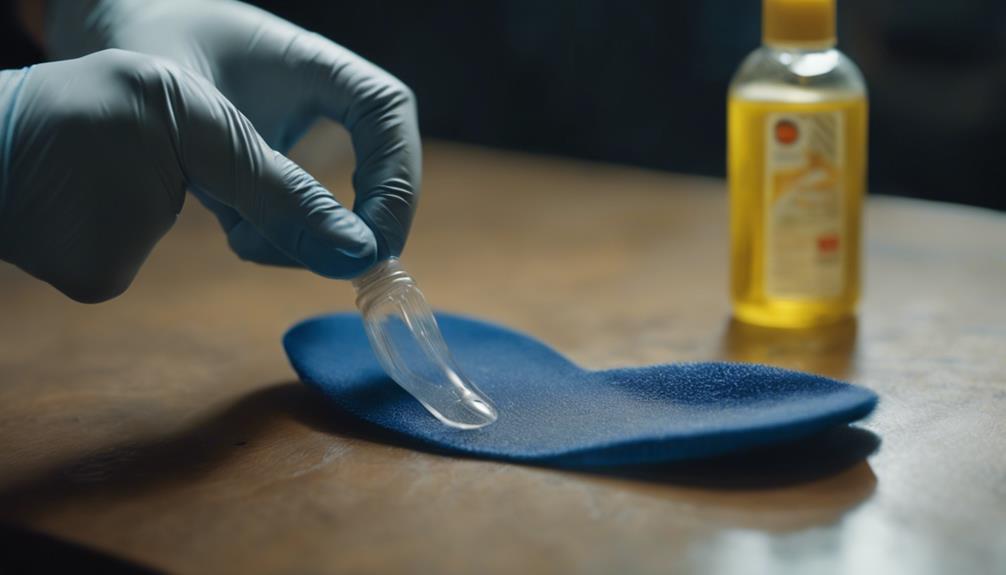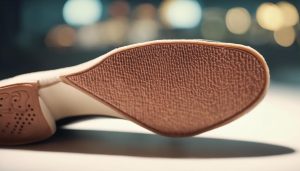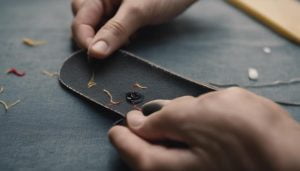This post contains affiliate links. As an Amazon Associate, we earn from qualifying purchases.
When faced with a squeaky insole, the solution may lie in simple remedies that can be implemented at home. Understanding the root cause of the noise is crucial to effectively addressing the issue.
By employing practical methods such as utilizing common household items or exploring specialized products, individuals can potentially find a resolution to this common nuisance.
However, delving deeper into the intricacies of insole maintenance and considering professional advice may offer a more comprehensive approach to tackling persistent squeaks.
Key Takeaways
- Reduce friction by using household items like candles or talcum powder.
- Silence squeaks with lubricants like silicone spray or anti-chaffing gel.
- Implement permanent fixes such as using matching orthotic inserts.
- Prevent future squeaks by rotating, storing, and maintaining insoles properly.
Common Causes of Squeaky Insoles
Squeaky insoles are often caused by factors such as friction between the orthotic insert and the shoe, movement of the orthotic within the shoe, gaps between the orthotic and the shoe, the cushioning material of the orthotic rubbing against the shoe, and moisture or sweat buildup in the shoe.
Friction between the orthotic and shoe can create a squeaking noise, especially if there is excess movement or gaps present. To address this, applying a small amount of powder to the area where the orthotic and shoe meet can help reduce friction and consequently minimize squeaking. Additionally, using duct tape or moleskin to secure the orthotic in place, or applying silicone spray to the orthotic inserts, can also help alleviate the squeaking issue.
Quick Fixes Using Household Items
In addressing the issue of noisy insoles, practical household items can offer effective and convenient solutions for minimizing the unwanted squeaking sounds.
One quick fix involves rubbing a candle around the edges of the insole to reduce the friction of the orthotic device in your shoes. Another solution is to dust talcum powder or corn starch on the orthotic inserts to stop Squeaky Orthotics.
Using a dryer sheet underneath the insert or applying Velcro strips to secure the orthotics can also help prevent movement and squeaking. Moreover, sticking Moleskin at the heel of the insole can provide cushioning and reduce squeaking.
These simple household remedies can offer temporary relief until a more permanent solution is found.
Using Lubricants to Silence the Squeak

To effectively eliminate unwanted noise caused by insoles, utilizing lubricants such as silicone spray or anti-chaffing gel can provide a practical solution. When applied to the edges or surface of orthotic inserts, these lubricants reduce friction from the device, ultimately stopping the squeak.
Silicone spray forms a protective layer that minimizes rubbing and squeaking as you move around in your shoe, while anti-chaffing gel acts as a smooth barrier between the insole and shoe, preventing any unwanted sounds. Regular application of these lubricants not only silences the squeak but also maintains a quiet and comfortable experience while wearing orthotics, offering an added benefit of preventing custom orthotics from squeaking.
Permanent Solutions for Squeaky Insoles
When seeking a lasting resolution to persistent noise disturbances emanating from footwear, exploring permanent remedies for insoles becomes imperative.
One effective method is to insert a dryer sheet between the insole and the shoe bottom; the sheet reduces abrasion friction, minimizing squeaks.
Additionally, using orthotic inserts that match the shape of your orthotic can stop the squeaking. Ensure the inserts fit snugly back into your shoe to prevent any movement that could cause noise.
For running shoes, securing the insole with athletic tape provides a cost-effective solution. This quick fix works for both new and slightly used insoles, offering a simple and efficient way to silence squeaks for good.
Prevention Tips for Future Squeaks

Regularly maintaining and inspecting your insoles is key to preventing future squeaks in your footwear. To keep your insoles in top condition and avoid unwanted noises, consider the following prevention tips:
- Rotate Insoles: Place different insoles in your shoes to evenly distribute wear and reduce friction that can lead to squeaking.
- Use Anti-Friction Products: Apply talcum powder or similar products to the distal end of the insole to minimize friction and prevent squeaks.
- Proper Storage: Store your insoles in a dry, well-ventilated area when not in use to prevent moisture buildup that can cause squeaking issues.
Frequently Asked Questions
How Do You Stop an Insole From Squeaking?
To prevent insoles from squeaking, apply talcum powder or lubricant to reduce friction. Secure orthotics with double-sided tape or adhesive spray to prevent movement and noise. Use dryer sheets, moleskin, or felt pads for a barrier. Consult a podiatrist for long-term solutions.
Why Do the Inside of My Shoes Squeak When I Walk?
The inside of shoes may squeak when walking due to friction between insoles and shoe materials, moisture buildup, improper fit, cushioning material rubbing, or gaps between orthotic inserts. Addressing these factors can help eliminate the squeaking noise.
How Do You Fix Squeaky Shoe Soles?
To address squeaky shoe soles, a cost-effective solution involves using athletic tape. This method encompasses cleaning the insoles' bottoms and applying the tape, which can be trimmed for a seamless finish. It's a simple, effective fix suitable for various insole types.
How Do I Stop My Shoes From Making Noise When I Walk?
To prevent shoes from making noise when walking, consider applying talcum powder or lubricant to reduce friction. Secure insoles with double-sided tape for a snug fit. Opt for custom-made insoles or use dryer sheets for extra protection and reduced noise.
Conclusion
In conclusion, addressing the cause of squeaky insoles through simple fixes like using talcum powder, duct tape, or double-sided tape can help eliminate the annoying noise.
Lubricants such as silicone spray and permanent solutions like custom-made insoles can provide long-term relief.
Implementing preventive measures like adding powder or dryer sheets under the insert can help avoid future squeaks.
Seek professional advice if issues persist for a solution tailored to your specific needs.



